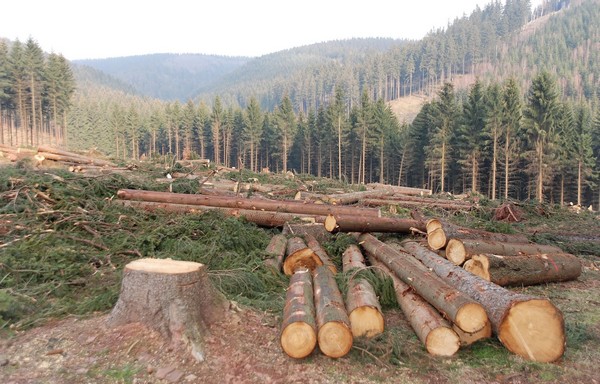Of the many reasons behind deforestation across the world, Infrastructure ranks highly as one of the most invasive. However, it’s not the first thing that comes to mind when we think of our rapidly vanishing forest habitats. It’s important to understand the reasons behind the expansion of road, rail and shipping infrastructure in our world, and lend our support to the many grassroots organizations, who are trying to raise awareness and stop it from getting worse.

How’s the damage being caused?
We’re a world that is largely reliant on cars, trucks, trains, and other vehicles. Not just to get around but to help us with industrial tasks like farming, transportation, mining, and the industry itself. As environmentalists and conservationists, we know that vehicles are a big part of our climate problem but it’s not just their emissions. These vehicles have to drive on something. Over time, we’ve learned that the fastest route from A-B is, in most cases, the straightest one. And that, sadly, is a big part of the problem because it means plowing through precious habitats.
Minerals are in demand
In many of the areas hit hardest by deforestation caused by infrastructure expansion, the reason behind the need for new roads is to get at what lies beneath the ground. Rich seams of minerals, precious metals, and potential fossil fuels. And as we exhaust the existing low-hanging fruits, mining corporations abandon their old, failing mines and search for new hunting grounds.
This often takes them deeper and deeper into our forests, as they carve new roads into place – often very wide to accommodate their heavy vehicles. It’s not just roads either, railway lines to are etched into the forests habitats to carry large cargos out into the wider world.
Back in 2014, the G20 group of countries collectively committed to investing 90 trillion dollars into new infrastructure, lots of which connected with industries linked to resource extraction. The political and financial weight behind resource extraction dwarves that which supports projects that want to stop deforestation. A familiar theme around the world.
The cost of farming and agriculture
Mining’s not the only culprit though. There’s the infrastructure created to support expansive farming and forest plantations growing palm oils and sugar cane. Again, another industry that has a need to transport its output from farm to processing plants and beyond. Like mining, agriculture and farming have those knock-on effects on our climate and our ability to control emissions. But the destruction of miles and miles of habitat caused by making new networks of roads, railways, and shipping ports are huge. And they happen very quickly, which means that local organizations fighting to halt deforestation have to be able to mobilize and act fast.
One of the biggest concerns about the immense loss of habitat that arises from deforestation, and the displacement of biodiversity which follows, is the time it takes to rebuild natural habitat to its former glory. The trees themselves and the animals which live in and around them, have a symbiotic relationship. They need one another to sustain growth. In a typical mature tropical rainforest environment, around 80% of the tree species present will need the help of animals to spread their seeds. This sort of ecosystem takes around 65 years to regenerate naturally but longer to reach maturity.
The number of years for regeneration increases though in different types of forest, and also in relation to the types of light conditions and biodiversity, in some extreme cases being thousands of years.
The human effect
Yet it’s not big business alone which is responsible for increases in worldwide infrastructure growth. It also goes hand in hand with our spiraling populations and the expansion of our cities and towns. Granted there’s not much we can do to counteract this, but we can hope that local and regional authorities act to keep the impact on natural habitats as low as possible. And also that they invest in schemes that help organizations replant new trees and protect areas of an ancient forest, which are the hardest to repopulate in terms of wildlife species that are forced from their homes.
Help us take a stand
This is where you step in. Donating to support local grassroots organizations, working to protect our forests 24-hours a day, enables them to act with speed to not only plant new trees and lessen the damage to natural habitats. It also helps them to protect the species which live in our wonderful, rich, diverse forests. At the same time, you’re giving them the resources they need to lobby local governmental agencies to take into account the native communities that call the forest their home and give them the rights to the land they too call home.
Together as one we can protect and conserve these special forests and make sure they carry on their work as our best allies in the fight to stop global warming.
